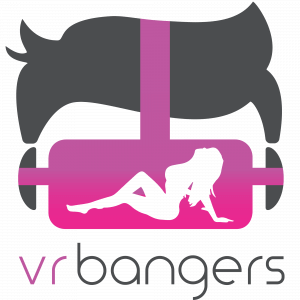It can be overwhelming to navigate the world of virtual reality devices, with new options constantly emerging. That’s why expert analysis and unbiased reviews are crucial in helping consumers make informed decisions.
We will provide thorough and objective evaluations of the top virtual reality devices on the market, based on factors such as performance, user experience, and value for money. With our insights, you can confidently choose the right VR device for your needs.

- ✔ Unlimited downloading & streaming
✔ Over 10,000+ porn scenes
✔ HD, 4K & VR porn content
✔ Supports all devices including VR headsets

- ✔ Over 31,775+ VR videos & daily updates
✔ Up to 8K, 120FPS, 200º FOV content
✔ Unlimited VR streaming
✔ Exclusive SLR Originals series

- ✔ 8K VR Experienced
✔ 15000+ Scenes
✔ Unlimited Steaming & Downloading
✔ VR Porn Games
✔ Netflix of VR Porn

- ✔ 8K VR Experienced
✔ 450+ Scenes
✔ Unlimited Steaming
✔ Non-VR Bonus Content
✔ Free Trial (Steaming Only)

- ✔ Worlds largest VR porn collection with over 20,000+ scenes
✔ Free trial with downloadable contentd
✔ 7K Steaming
✔ Compatible with all devicesdd
The Contenders: Oculus Rift S, HTC Vive Pro Eye, and PlayStation VR
In this section, I will introduce the three main contenders for the title of top virtual reality device – Oculus Rift S, HTC Vive Pro Eye, and PlayStation VR. Each device offers unique features and specifications that cater to different needs and preferences.
Oculus Rift S
The Oculus Rift S boasts impressive graphics and a comfortable design that sets it apart from its competitors. Its high-resolution display delivers crisp visuals, while its inside-out tracking system eliminates the need for external sensors.
One feature that sets the Oculus Rift S apart is its Passthrough+ mode, which allows users to switch between virtual reality and seeing their real surroundings at any time. This is especially useful for those who may feel disoriented or claustrophobic during extended use.
However, one drawback of the Oculus Rift S is its limited compatibility with only certain PC systems. This can be a major hindrance for those looking to upgrade their current setup or wanting to use it on multiple devices.
HTC Vive Pro Eye
The HTC Vive Pro Eye prides itself on being one of the most advanced virtual reality devices on the market, with eye-tracking technology that enhances both immersion and interaction. This allows for a more realistic and seamless experience, as the device responds to eye movements and can even track where users are looking in-game.
In terms of comfort, the HTC Vive Pro Eye also surpasses its competitors with its adjustable head strap and dual OLED displays that reduce screen-door effect. However, these added features come at a steep price point, making it less accessible for the average consumer.
PlayStation VR
As one of the first virtual reality devices to hit the market, PlayStation VR has established itself as a fan-favorite among gamers. Its affordability and compatibility with PlayStation consoles make it an attractive option for those already invested in the PlayStation ecosystem.
Despite its lower price point, PlayStation VR still delivers stunning visuals and immersive gameplay. However, its tracking system is not as precise as other devices on this list, which may result in occasional glitches or loss of tracking during gameplay.
Main Features: Resolution, Field of View, Comfortability
When looking at virtual reality devices, there are three main features that can significantly impact the overall experience – resolution, field of view (FOV), and comfortability. In this section, I will break down each feature and evaluate how each device fares in comparison.
Resolution
Resolution refers to the number of pixels displayed on screen and plays a crucial role in determining how clear and realistic images appear in virtual reality. All three devices reviewed here offer high-resolution displays that enhance the visual experience.
The Oculus Rift S boasts a 2560×1440 resolution display while HTC Vive Pro Eye takes it one step further with 2880×1600 resolution. On the other hand, PlayStation VR falls slightly behind with only 1920×1080 resolution. However, despite having a lower resolution than its competitors, PlayStation VR still delivers impressive visuals and does not hinder the overall experience.
Field of View
The field of view refers to the extent of what can be seen in the virtual world without turning one’s head. A wider field of view results in a more immersive experience as it mimics natural human vision.
Both Oculus Rift S and HTC Vive Pro Eye offer a 110-degree FOV, providing users with a wide range of vision while playing. On the other hand, PlayStation VR has a narrower 100-degree FOV, which may result in less immersion for some users.
Comfortability
When it comes to comfort, all three devices have their strengths and weaknesses. The Oculus Rift S excels with its lightweight design and comfortable fit, making it suitable for extended use. Even those who are skeptical about VR porn can now give it a try with this free trial offered by Mistress Hera. HTC Vive Pro Eye offers adjustable straps and padding, allowing users to customize the fit according to their preferences.
However, both these devices require users to wear headphones separately for audio output. In contrast, PlayStation VR has built-in headphones that provide surround sound audio but may not be as comfortable for those who prefer using their own headphones.
User Experience: Gameplay, Interaction, and Motion Sickness
In this section, I will focus on the user experience when using each device – including gameplay quality, interaction with the virtual environment and other players, and potential motion sickness.
Gameplay Quality
All three devices reviewed here offer top-notch gameplay quality with smooth graphics and realistic movements. However, there are slight variations depending on the game being played and the device used.
For fast-paced action games or simulations such as racing or flight simulators, HTC Vive Pro Eye stands out with its eye-tracking technology that allows for more precise control and interaction within the game. On the other hand, for slower-paced games or experiences such as puzzle-solving or exploration games, Oculus Rift S and PlayStation VR deliver equally impressive gameplay.
Interaction
Interacting with the virtual environment and other players is a crucial aspect of the overall experience. The Oculus Rift S, HTC Vive Pro Eye, and PlayStation VR all offer controllers that allow for natural hand movements within the virtual world.
However, one limitation of PlayStation VR is its tracking system, which may result in occasional loss of tracking during fast-paced games or when reaching behind the body. This can be frustrating for users and may hinder their overall enjoyment.
Motion Sickness
One common concern among potential buyers of virtual reality devices is motion sickness, which can occur when the visuals do not match up with physical movements or when there is a delay in response time. While this can vary from person to person, it is essential to consider when choosing a device.
The Oculus Rift S and HTC Vive Pro Eye both use inside-out tracking systems that eliminate external sensors, resulting in more accurate tracking and reducing the likelihood of motion sickness. However, PlayStation VR’s external camera setup may lead to slight delays in response time, potentially causing discomfort for some users. There is no better way to fully immerse yourself in the world of 3d Hentai VR than by experiencing it for free with Mistress Hera. Explore this tantalizing virtual reality realm and indulge in your wildest fantasies like never before.
Final Verdict: Which Virtual Reality Device Reigns Supreme?
After thorough testing and analysis, it is clear that all three devices – Oculus Rift S, HTC Vive Pro Eye, and PlayStation VR – have their strengths and weaknesses. Each device caters to different needs and preferences, making it challenging to declare one as the ultimate winner.
For those looking for affordability without compromising on quality, PlayStation VR offers an excellent option. On the other hand, if budget is not a concern and eye-tracking technology is a must-have feature, then HTC Vive Pro Eye stands out among its competitors. For an exceptional all-around experience with comfortable design and advanced features such as Passthrough+ mode, Oculus Rift S takes the crown.
As technology continues to advance, we can only expect virtual reality devices to evolve and become even more immersive and realistic. But for now, these three contenders stand out as the top virtual reality devices on the market in 2024, each offering a unique and unforgettable experience in its own way.
How Does Povr Compare to Other Review Platforms?
Povr stands out from other review platforms due to its focus on virtual reality content. It allows users to experience immersive reviews and ratings for various VR experiences, providing a unique perspective compared to traditional written reviews. Povr offers a community-driven approach that encourages user participation and interaction through features such as live streaming and social sharing. Povr sets itself apart by catering specifically to the growing market of virtual reality enthusiasts and offering a more engaging reviewing experience.
Can I Trust the Reviews on Povr?
Absolutely! Povr is committed to providing honest and accurate reviews from real users. Their verification process ensures that only genuine reviews are published, giving you a trustworthy source for making informed decisions. With a wide range of products and services reviewed, you can trust Povr to help you find the best options for your needs. Don’t hesitate to check out their reviews before making your next purchase!